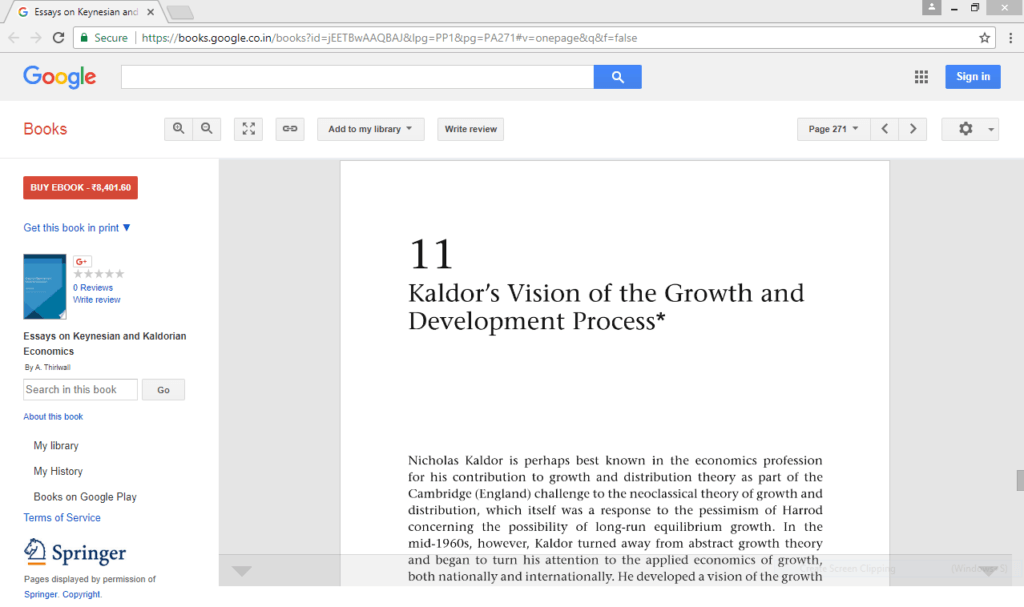Anthony Thirlwall’s new book Essays on Keynesian and Kaldorian Economics is out. It has a nice chapter (chapter 11) originally written by Thirlwall himself from 1991 titled Kaldor’s Vision Of The Growth And Development Process. The description from introduction (pdf from Palgrave’s website) is a good summary:
Essay 11 outlines Kaldor’s vision of the growth and development process – a topic that concerned him for most of his academic life after the Second World War. The Essay covers his growth laws; his export-led growth model incorporating the notion of ‘circular and cumulative causation’, and his two-sector model of the interrelationship between the agricultural (primary product) and industrial sectors of the world economy. Central to Kaldor’s vision was the distinction to be made between increasing returns activities on the one hand (manufacturing industry) and diminishing returns activities on the other (land-based activities such as agriculture and mining). This distinction lies at the heart of his three growth laws that (i) manufacturing is the engine of growth because of (ii) static and dynamic returns to scale in industry (also known as Verdoorn’s law), and (iii) increases in productivity outside of manufacturing as resources are drawn from diminishing returns activities. The question, of course, is what determines industrial growth in the first place. Kaldor’s answer was that it is the prosperity and growth of the agricultural sector in the early stages of development, and then export growth in the later stages. In an open economy, exports are the only true [exogenous] component of aggregate demand. Consumption and investment are largely endogenous.
This view of the role of exports is the basis of his ‘regional’ export-led growth model with cumulative features which has four structural equations: (i) output growth as a function of export growth; (ii) export growth as a function of changing competitiveness and income growth outside the region; (iii) competitiveness as a function of productivity growth, and (iv) productivity growth as a function of output growth (Verdoorn’s Law). Depending on the parameters of the model, regional growth rates may diverge or converge (see Essay 12). It is also possible to introduce a balance of payments constraint into the model which, if relative prices (or real exchange rates) don’t change in the long run, leads to the result that growth will approximate to the rate of growth of exports relative to the income elasticity of demand for imports, which is the dynamic analogue of the static Harrod foreign trade multiplier, which Kaldor argued was a more important multiplier than the Keynesian closed economy multiplier for understanding the pace and rhythm of growth in open economies.
In a closed economy, however, growth by definition cannot be determined by exports. The world as a whole is a closed economy, and Kaldor lectured in Cambridge for many years on a two-sector model of world growth in which the growth of the industrial sector of the world economy is fundamentally determined by the rate of land-saving innovations in agriculture as an offset to diminishing returns in that sector. The model shows that if growth is to be maximised, there must be an equilibrium terms of trade between the two sectors, otherwise growth will be demand constrained if agricultural prices are ‘too low’, or supply constrained if agricultural prices are ‘too high’. Kaldor himself never brought the model to fruition in published form, but attempts have been made to formalise it by Targetti (1985) and myself (see Essay 13).
Google Books preview below.
click to preview on Google Books’ site
